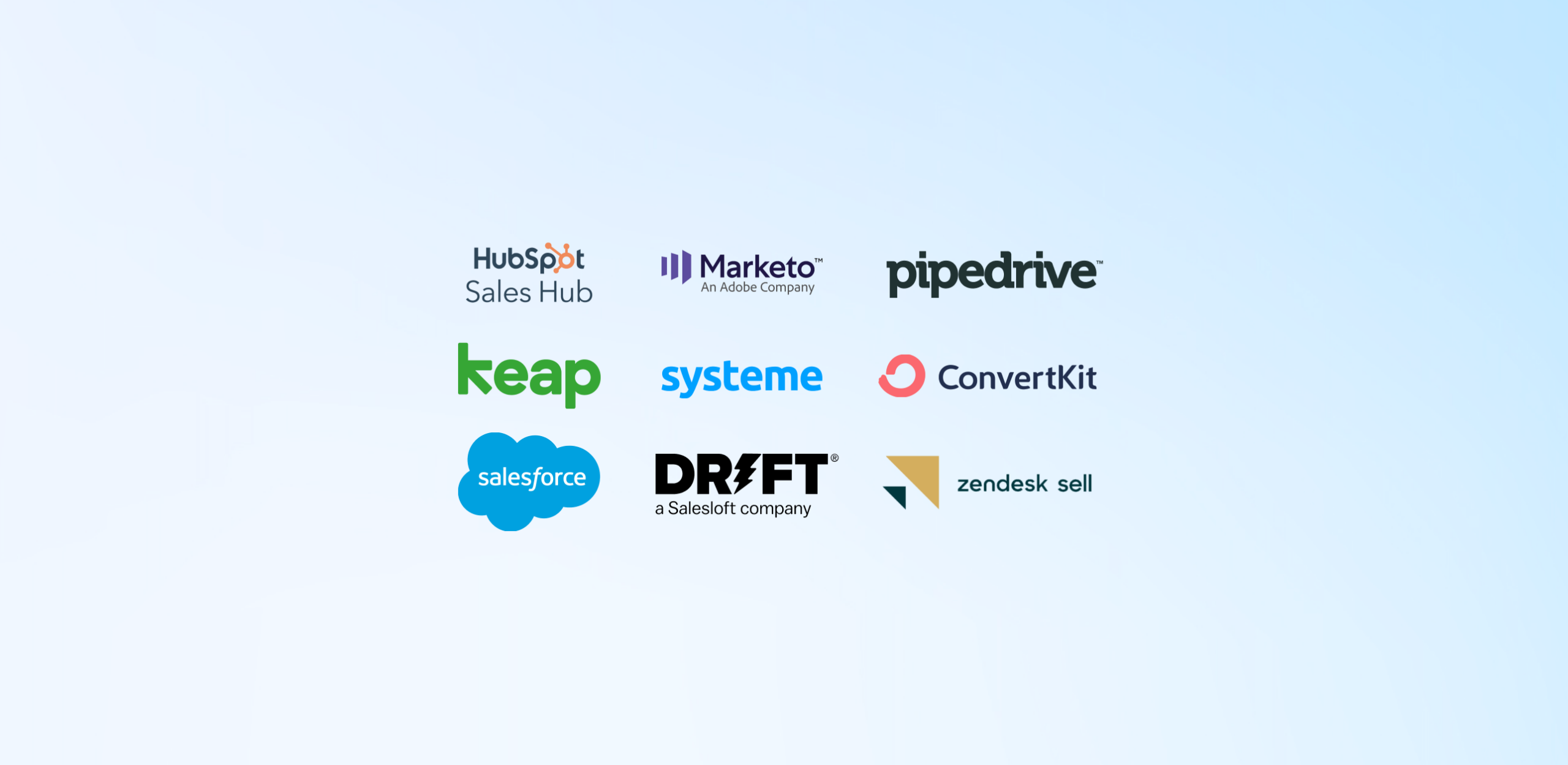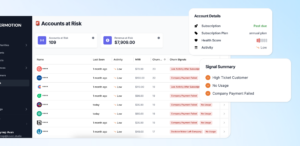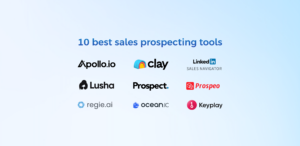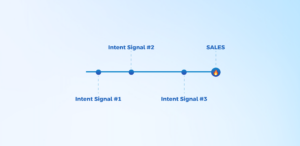You may have an imaginary sales funnel visualized on your Notion page or Miro dashboard, and it may be easy to make it work when there are few leads. But as demand grows, the need for automations and a real software solution becomes a necessity.
What is Sales Funnel Software?
Sales funnel software is a product that automates and streamlines the process of guiding leads from the first stage of awareness of the sales funnel to the final buying decision. It offers a range of features designed to attract, engage, and convert leads into customers. Here are some of the general features you can expect from top sales funnel software, inspired by industry leaders and innovative platforms:
- CRM
- Lead Capture and Management
- Segmentation and Personalization
- Sales Automation
- A/B Testing
- Analytic Dashboards
- Landing Page Builders
- Email Marketing Automation
- Referral and Affiliate Management
- Customer Support
- Content Creation and Management
- Social Media and Ad Retargeting
- Webinar and Event Management
How to Run a Manual Sales Funnel?
Running a manual sales funnel requires several hands-on steps, careful tracking and personalized interaction at every stage of the customer journey. Here’s how to effectively manage this process:
- Define Your Target Audience: Understand who your potential customers are. Create buyer personas to meet the needs, interests and problems of your ideal customers.
- Generate Leads: Use a variety of strategies to attract leads. This can include content marketing, social media outreach, networking events and more. Each lead should be documented, usually in a spreadsheet or simple database.
- Qualify Leads: Not all leads are ready to buy. Use predictive lead scoring software to score and prioritize your high-potential leads.
- Nurture Leads: Develop relationships with leads through direct communication such as email, phone calls or face-to-face meetings. Provide value through informative content, solutions to their problems and answers to their questions.
- Close the Sale: Once a lead has been qualified and nurtured, it’s time to close the sale. This involves negotiations, overcoming objections and finally closing the sale.
- Follow Up After the Sale: The sales process doesn’t end with the sale. Follow up with customers to make sure they are satisfied, encourage feedback and encourage repeat business or referrals.
Why to Choose a Software to Manage Sales Funnel?
Choosing a sales funnel software to manage your funnel offers numerous advantages that can significantly enhance your marketing and sales processes.
Systematic Lead Management
Managing leads manually can become overwhelming and open to errors, especially as your business grows. Sales funnel software systematically organizes leads, tracks their progress through the funnel and segments them based on behavior, preferences or demographics.
Data-Driven Decisions
When you use sales funnel software, it begins to collect data about your leads, their activities, and behaviors. This allows you to make more informed decisions by examining each stage of your sales funnel, such as at which point a lead converts, at which point a lead drops off your funnel, or how much time it takes.
Automation of Repetitive Tasks
Sales funnel software automates repetitive tasks such as lead capture, email follow-ups, and lead scoring. This automation not only saves time but also ensures no lead is neglected, improving the efficiency of your sales process.
Enhanced Funnel Analytics
Understanding the performance of your sales funnel is crucial for making informed decisions. Sales funnel software provides analytics and reporting tools that give insights into the health of your funnel, from lead generation to conversion.
Scalability
As your business grows, so does the complexity of managing your sales funnel. Sales funnel software is designed to scale with your business, accommodating an increasing volume of leads and more complex sales processes.
Personalized Customer Experience
Providing a consistent and personalized customer experience is key to converting and retaining customers. Sales funnel software enables the delivery of personalized communications and offers to leads at different stages of the sales funnel, based on their actions and preferences.
How to Choose a Sales Funnel Software?
Selecting the right sales funnel software for your business requires careful consideration of several key factors to ensure it meets your specific needs and helps you achieve your marketing and sales objectives. Keep the following points in mind when choosing one:
1. Consider Business Needs
Evaluate the size of your business, the complexity of your sales process, and specific challenges you’re facing in managing your sales funnel. Understand the features you need, such as lead capture, email marketing, CRM capabilities, analytics, and automation tools.
2. Look for User-friendly
The software should be intuitive and user-friendly. A steep learning curve can slow down adoption among your team and hinder your marketing and sales efforts.
3. Evaluate Integration Capabilities
Consider how well the software integrates with other tools you already use, such as your CRM system, social media platforms, and customer service software.
4. Go After Growth
Choose software that can grow with your business. It should be flexible enough to accommodate an increasing number of leads and complex sales processes as your business expands.
5. Understand Pricing
Understand the pricing model and ensure it aligns with your budget. Consider the cost versus the ROI the software can provide. Some platforms offer a tiered pricing model, which can be advantageous as your business grows.
6. Ensure Security
Ensure the sales funnel software complies with relevant data protection regulations and protect your and your customers’ information.
10 Best Sales Funnel Software
When your business reaches a point where manual management of your sales funnel is no longer possible, it’s time to consider using software to automate and optimize the process. Here are the 10 best sales funnel software solutions.
1. HubSpot Sales Hub
HubSpot Sales is a sales and lead management software designed to streamline the sales process, as almost everyone thinks of when it comes to customer relationship management or sales management.
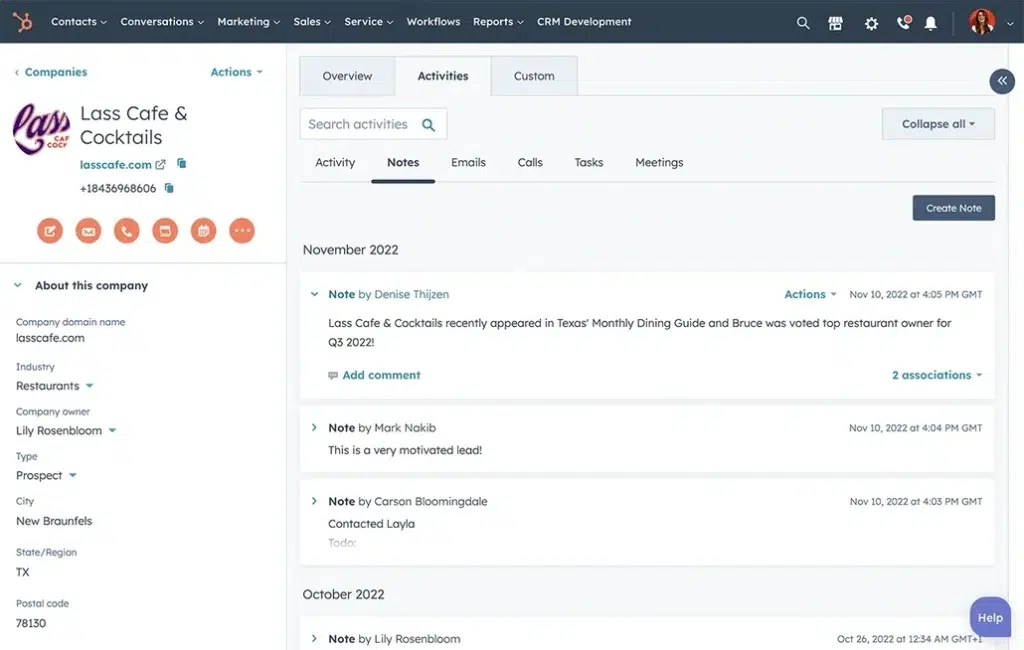
It offers a tool suite to help with lead management, prospecting and sales funnels within a single personalized workspace. This service is part of HubSpot’s larger package of marketing, sales and service tools.
HubSpot’s lead management and tracking software improves sales funnel efficiency by:
- Centralizing lead management
- Automating scoring and prioritization to improve lead quality
- Automating assignments and follow-ups
- Integrating activity tracking and touchpoints
- Lead nurturing with segmentation and engagement tools
- Automating repetitive tasks, enabling sales teams to focus more on direct engagement and closing deals
Features
- Automated lead assignments
- Follow-ups
- Lead scoring
- Touchpoints
- Segmentation
- Activity tracking
Pricing
HubSpot’s lead management tools are is available in multiple products, and it is free to get started.
If you need advanced features to manage your sales funnel and leads, HubSpot also offers premium features in the Starter, Professional, and Enterprise plans.
2. Zendesk Sell
Zendesk Sell is a sales CRM tool that enable teams with customer relationship management and sales automation software.
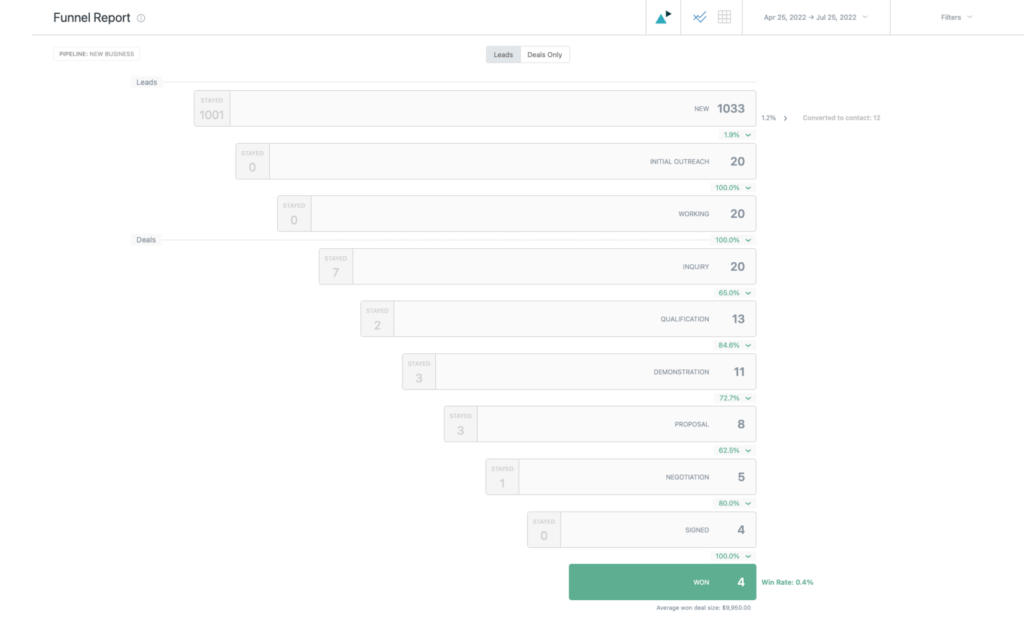
Zendesk’s Funnel Report analyzes lead and deal progress throughout the sales funnel, so you can see the number of leads coming in, how many are in awareness or negotiation, etc.
On the other hand, using Zendesk’s Pipeline Development reports, you can also manage your sales funnel, view your deals and leads and which funnel stage they are in.
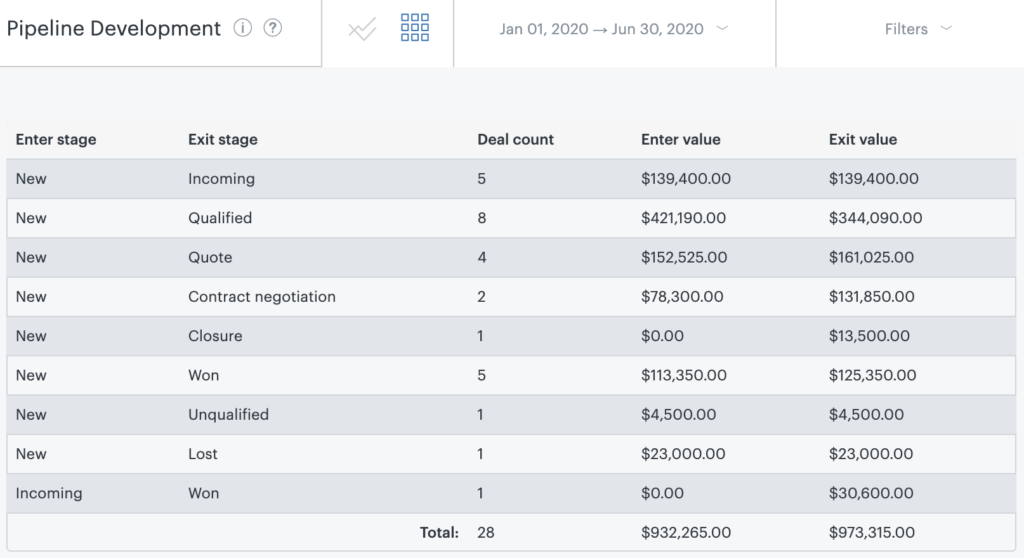
It helps creating and managing a sales funnel with:
- Funnel report
- Pipeline development
- Productivity tools, including email and call functionalities
- Integrations that links accounts to Zendesk Sell, offering alerts, templates and automatic tracking
- Task Player that manage sales activities, including outreach and follow-ups
- Custom criteria or historical data to score and rank leads
- Customer view and information in one platform
- Reporting into accurate forecasting and advanced analytics
Features
- Email integration
- Sales engagement tools
- Workflows with Task Player
- Reports and Analytics
- Call and text functionalities directly from the CRM
- Smart lists and templates
- Real-time segmentation and filtering
- Automated lead scoring and task sequences
- Power dialer
- Bulk outreach capabilities
- Sales triggers
Pricing
Zendesk offers four pricing tiers. Sell Team plan starts at $19/m per user; Sell Growth plan is priced at $55/m per user; Sell Professional costs $149/m per user; Sell Enterprise plan at $169/m per user.
3. ActiveCampaign
ActiveCampaign is a customer experience automation platform that integrates email marketing, automation, sales CRM, and more to manage and automate the entire customer lifecycle.

ActiveCampaign helps build and manage sales funnels by automating email sequences and pipelines, enabling the use of tags and triggers for follow-up communications. This automation makes it easy for prospects to progress through the different stages of the funnel, from awareness to conversion.
It’s pipeline format shared above helps in managing the sales funnel by providing a clear and organized framework for tracking interactions with prospects. Here are the features of ActiveCampaign that make it easy to run a sales funnel:
Features
- Automated sales pipeline
- Integrations
- Email sequences
- Tags and triggers
- Pre-built automation sequences
- Website tracking
- Email functionality
Pricing
It provides four different categories with different pricing tiers. For Sales, ActiveCampaign offers: Plus plan at $19/m; Professional plan at $49/m; Enterprise plan at $99/m.
4. Drift (a Salesloft Company)
Drift is an AI-powered buyer engagement platform designed to engage leads through real-time, personalized interactions using AI-powered chatbots and omni-channel communication. It aims to streamline the lead qualification process, build a high-quality pipeline, and increase the rate of sales conversions.
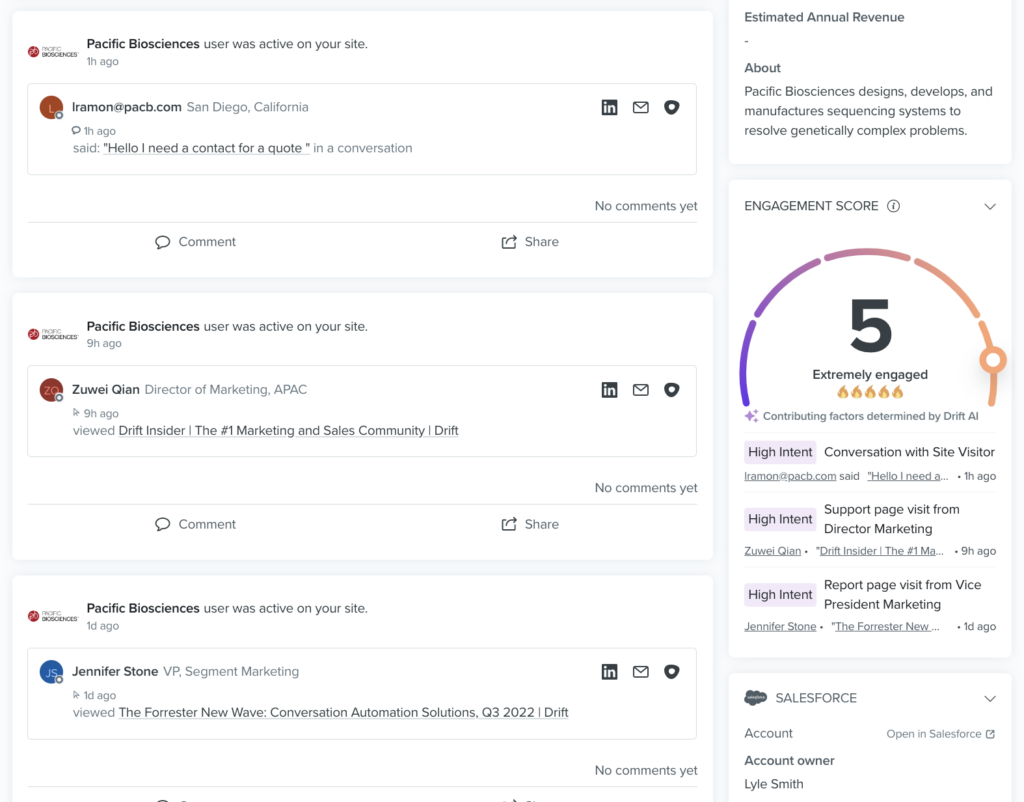
By integrating Drift, businesses can connect with visitors through chatbots that qualify leads and enable them to schedule meetings directly.
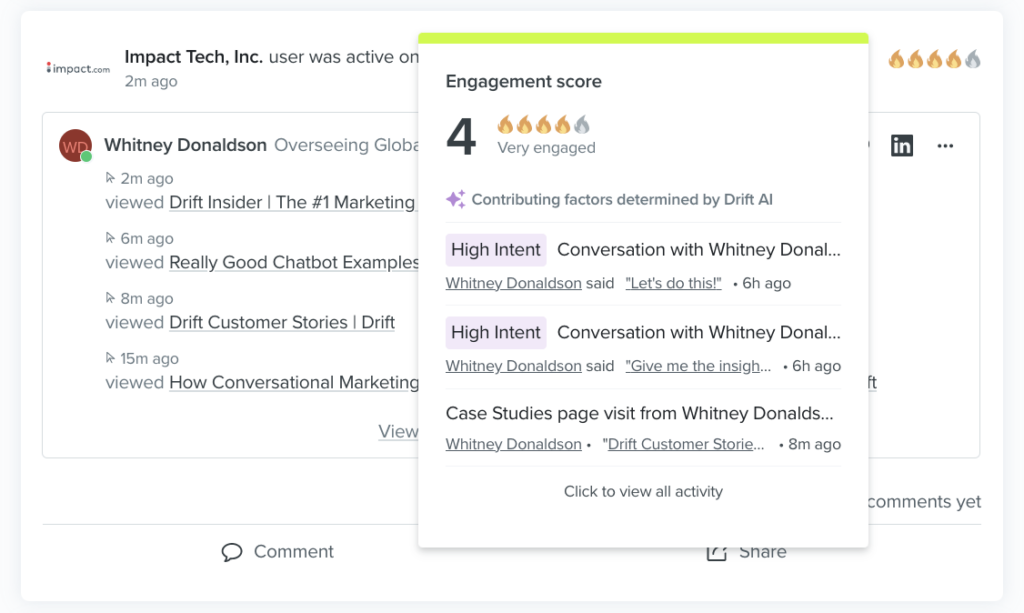
Drift assigns an AI-calculated engagement score to each lead based on their interactions across different channel.
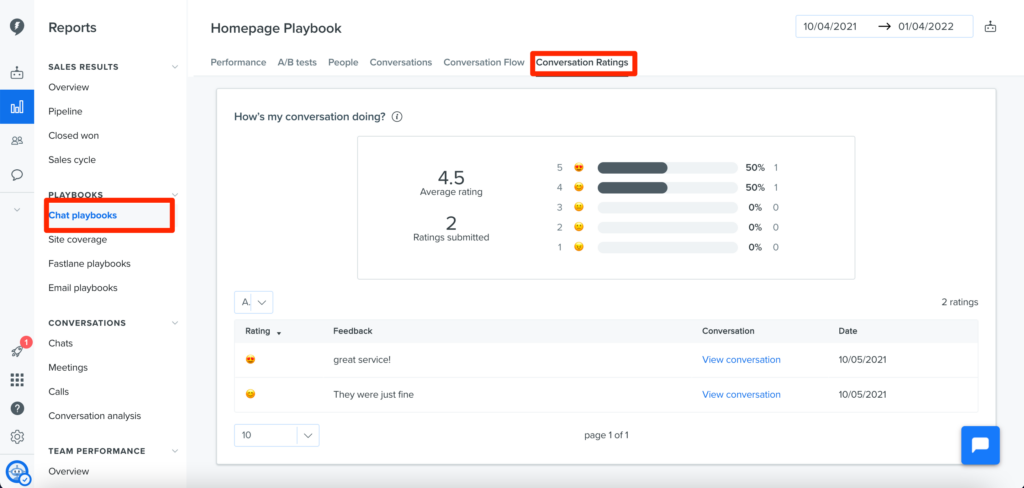
Drift helps with funnel and pipeline management by:
- Ensuring sales teams engage with the right prospects at the right time
- Prioritizing tasks and leads to focus efforts on interactions that are most likely to result in sales
- Providing real-time insights that allow for immediate, relevant conversations
- Improving seller efficiency with automated workflows and intelligent task assignments
- Increasing sales velocity and win rates through targeted, AI-driven strategies
Features
- Ready-to-use templates
- AI chatbot
- Engagement soring
- Workflows
- Mobile application
- Automated customer interactions
Pricing
Drift offer three pricing plans; Premium at $2,500/m and Advanced and Enterprise plans are available upon request.
5. Pipedrive
Pipedrive is a CRM and sales funnel software that helps businesses keep their sales pipeline moving efficiently.
It provides a visual representation of the sales funnel, showing the number of open deals, the stages they are in, and which leads to focus on, allowing sales reps to remain focused and managers to stay informed. Moreover, it:
- Automates lead nurturing, reducing manual work.
- Empowers teams with tools for productivity.
- Prioritizes leads with marketing automation.
- Forecasts sales and strategizes with pipeline data.
Features
- Sales automation
- Lead management
- Insights and reports
- Email and communications
- CRM
- Email builder
- Email segmentation
- Email analytics
- Marketing automation
Pricing
Pipedrive offers five different pricing tiers: Essential at $15/m; Advanced at $29/m; Professional at $59/m; Power at $69/m and Enterprise at $99/m per user. It offers a 14-day free trial.
6. Marketo (an Adobe Company)
Marketo, an Adobe product, is marketing automation software that allows businesses to streamline and measure their marketing efforts for increased efficiency and revenue growth.
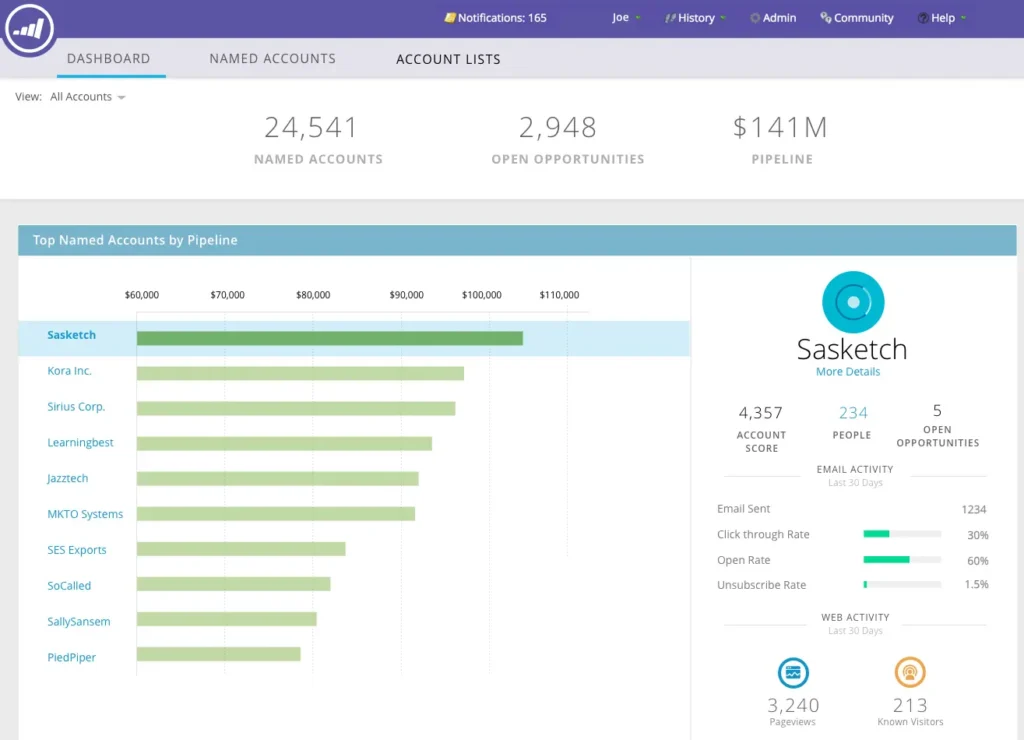
Marketo Engage’s set of features helps users align their marketing strategies to effectively meet their funnel goals.
With tools for creating forms, landing pages and email marketing campaigns, Marketo streamlines the customer journey processes.
Segmentation and predictive content features enable personalized marketing, increasing the likelihood of conversion.
Features
- Form Eeditor
- Landing page editor and templates
- Email editor
- Mail blast tools
- Segmentation
- Predictive content
- Mobile marketing
- CRM sync (Salesforce or Dynamics)
- Workflow engine
- Person scoring
- In-CRM dashboard for sales reps
- Target account management
Pricing
Adobe’s Marketo Engage offers four different pricing tiers, each is available upon request.
7. Systeme.io
Systeme.io is an all-in-one marketing platform that simplifies the creation and management of sales funnels. It is best for entrepreneurs without technical expertise by offering simplicity.
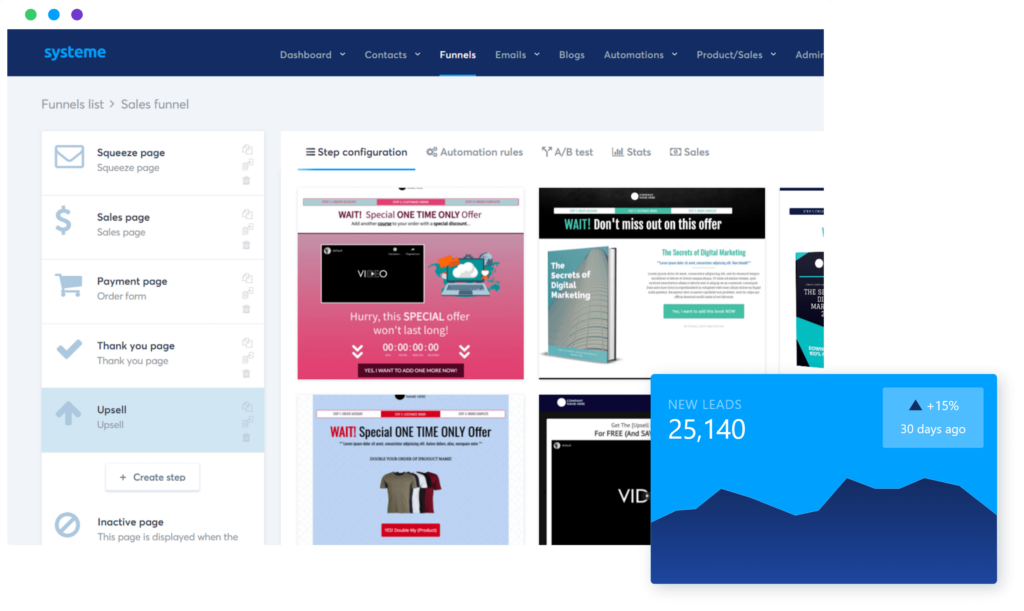
The software offers a suite of tools that replace traditional funnel builders, email marketing services, and course platforms. It helps creating funnels by:
- Simplifying the creation of sales funnels with an easy-to-use editor.
- Offering proven templates to speed up funnel setup.
- Integrating email lists, payment systems and membership sites into funnels.
- Automating funnel steps by triggering email sequences and providing instant course access.
Features
- Funnel builder
- Email marketing
- Website builder
- Affiliate management
- Online courses
- Marketing automation
Pricing
Systeme is an affordable solution with a free account option. But it also offer three pricing tiers: Startup at $27/m; Webinar at $47/m; and Unlimited at $97/m.
8. Keap
Keap is a CRM and marketing automation platform designed specifically for small businesses, focused on driving growth by increasing revenue, effectively engaging with customers and streamlining operations to reduce working hours.
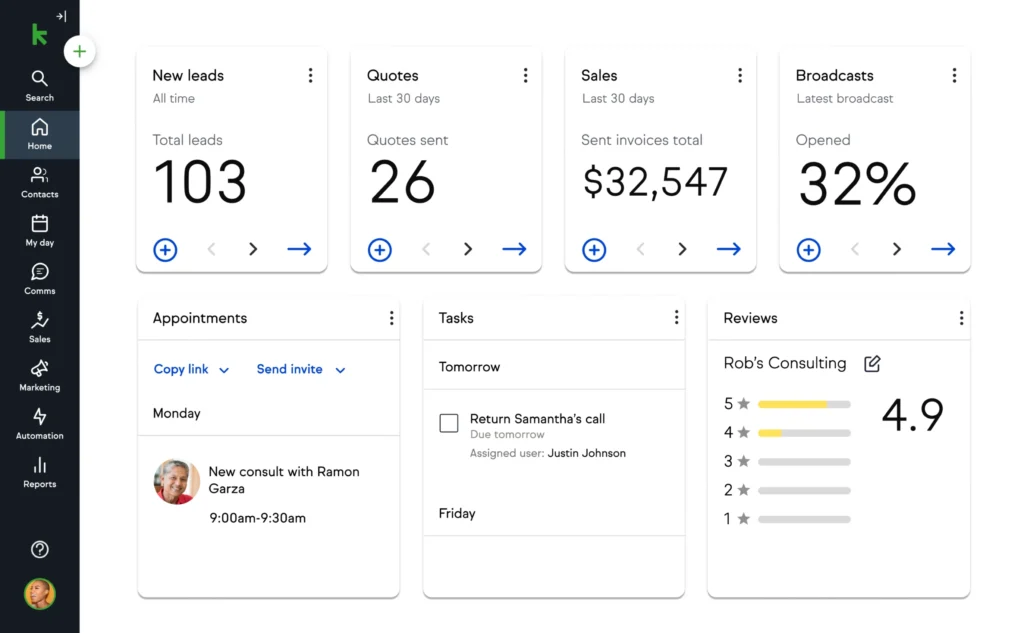
Keap helps creating and running sales funnels by:
- Automating lead capture and organizes customer information with minimal effort.
- Moving leads through the sales process with triggered actions and personalized follow-ups.
- Using automation to keep business owners focused on their core activities.
The platform:
- Collects new leads consistently and systematically.
- Customizes automated communications to maintain brand voice and improve conversion rates.
- Segments contacts for targeted email and text marketing campaigns.
- Offers a dedicated business line for professional customer interactions.
- Provides a drag-and-drop sales pipeline creator for visual tracking and management.
Features
- Sales and marketing automationcy
- Automated lead capture
- Follow-ups
- Invoicing and payments
- Text message marketing
- Business line
Pricing
Starting at $149/m for two users, Keap is best suited for power users looking to maximize their small business’s sales and marketing potential. Additional users can be added to any plan at $29 each.
9. ConvertKit
ConvertKit is an email marketing and audience growth platform designed for content creators, offering a range of tools for conversion with email, automation, and monetization tools.
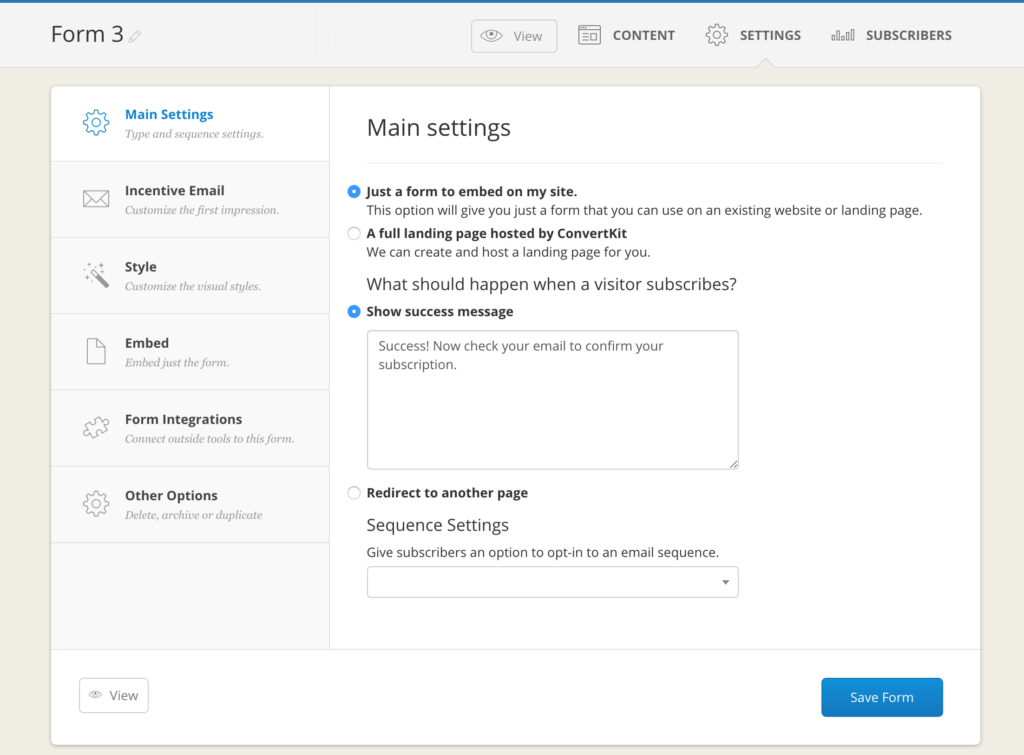
The platform helps creating sales funnel by:
- Using landing pages and forms to effortlessly capture leads and grow your subscriber base.
- Sending targeted, well-designed emails and sequences to maintain interest and move subscribers closer to a purchase.
- Implementing visual automations to manage subscriber journeys, from initial contact to conversion, freeing creators to focus on content.
Features
- Visual automation builder
- List management
- Segmentation
- Email integrations
- Landing pages with custom domains
- Email designer
- Deliverability optimization
- Creator metwork
- Forms for lead capture
Pricing
ConvertKit offers three pricing tiers that each is updated based the number of email subscribers you have.
10. Salesforce
I wanted to mention Salesforce at the end of this list as it is already one of the world’s leading CRMs designed to bring companies and customers together.
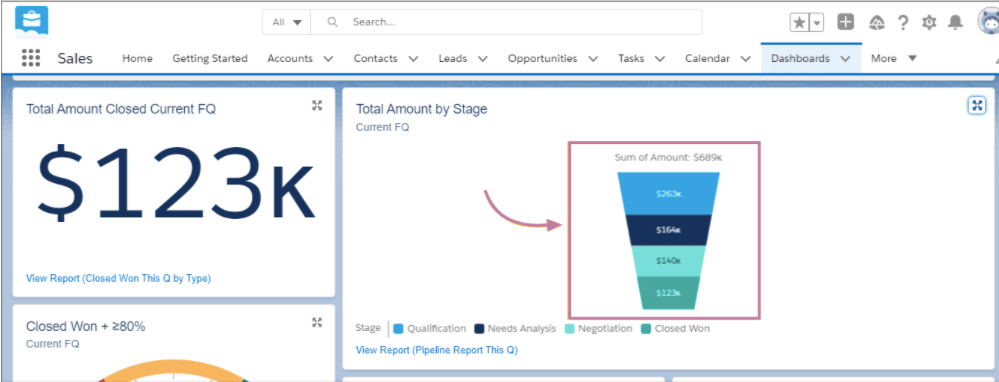
As an advanced CRM, you can use Salesforce to create a sales funnel by following these steps:
- Go to the “Dashboards” or “Reports” area in Salesforce to find the tools you need for analyzing your sales funnel.
- Choose a dashboard, like “Sales Overview.” Adjust how your data looks to match what you want to see. You can always change and look deeper into your reports.
- Look for a “Funnel” option in your report or dashboard settings. This turns your data into a funnel chart, showing you clearly how leads progress in your sales process.
- Use this funnel chart to spot any issues or stages where leads are getting lost. This information is key to tweaking your sales strategy for better results.
- Lastly, take advantage of Salesforce’s AI tools. They offer predictions and insights that can help you make smarter decisions and tailor your approach to each customer as they move through your funnel.
Features
- AI integration
- CRM capabilities
- Sales cloud
- Service cloud
- Marketing cloud
- Einstein AI platform
- Commerce cloud
Pricing
Salesforce has +10 service editions and different pricing tiers for each. So, they lead you to the related pricing in their product pricing page, with an option to contact sales.
Which Software to Choose?
When it comes to choosing the right sales funnel software for your business, my key takeaways boil down to understanding your specific needs and finding a tool that matches them. Here are my thoughts:
- Understand your needs
- Ease of use
- Integrations
- Cost
- Security
Sales funnel software is vast and varied, with each tool offering unique advantages. From my perspective, there is no one-size-fits-all solution.
Salesforce stands out for its extensive CRM capabilities and scalability, making it a solid choice for businesses looking for an all-in-one platform.
On the other hand, platforms like ConvertKit focus on audience growth and engagement, offering specialized features for content creators and small businesses.
Ultimately, the choice comes down to aligning the software with your business goals, workflow and the specific challenges you aim to solve.
Taking the time to try out a few options can be invaluable in finding the perfect fit.

